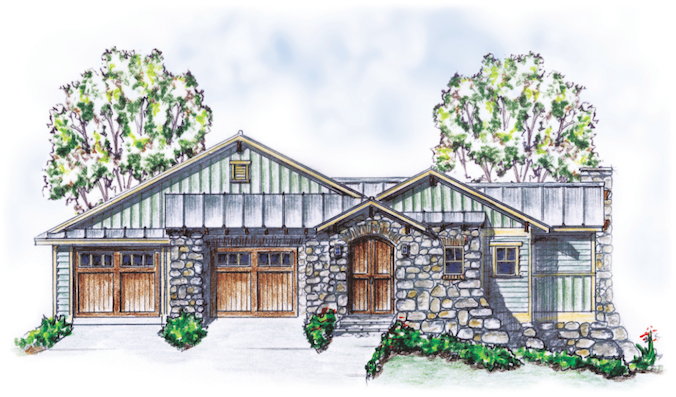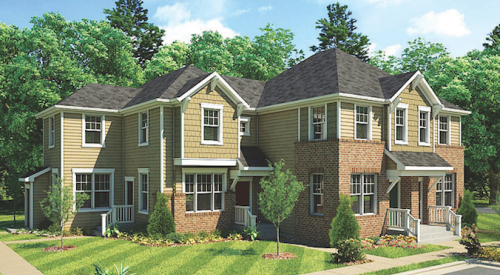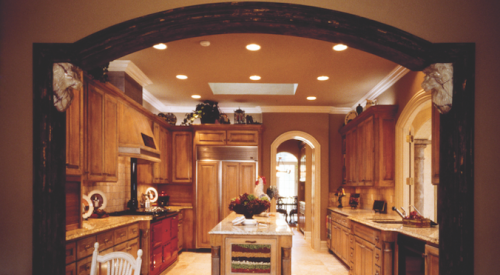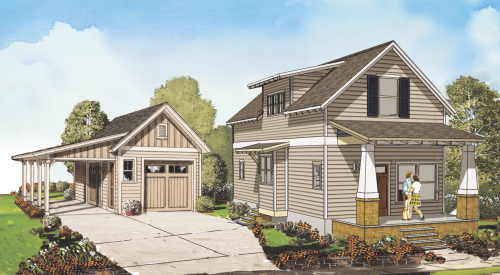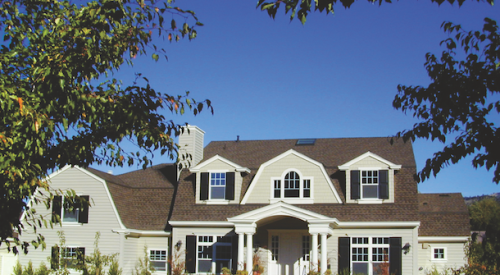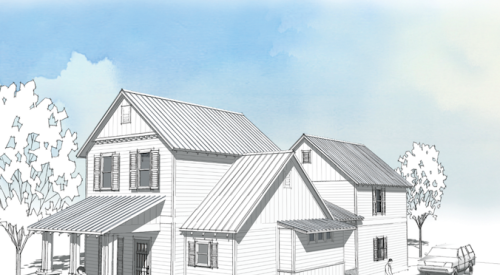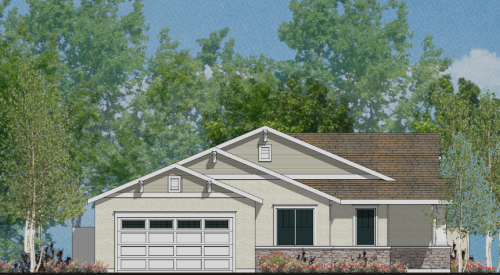Although the average home size has fluctuated recently, the demand for smaller homes continues to grow in many markets. Reducing square footage while maintaining a high level of design becomes a challenge for both architects and builders. As you’ll see in the following examples from our House Review team, creating interior spaces that open to one another and establish a direct relationship to outdoor living and entertaining areas are two of the design techniques often utilized. Additionally, and perhaps most importantly, a smaller home must carefully balance the sense of openness without sacrificing private getaway spaces.
Of course, the ability to minimize square footage while keeping the cost per square foot in line always becomes the greatest hurdle. After all, we know that buyers and Realtors do the math immediately. If you have some ideas and experiences relating to how you deal with this issue, we’d appreciate your comments. You can contact me directly at
larrygarnett@larrygarnettdesigns.com.
RELATED
The Baldwin
DESIGNER
Larry W. Garnett, FAIBD
254.897.3518
PLAN SIZE
Main house living area: 1,543 sf
Guest quarters: 340 sf
Total living area: 1,883 sf
The demand for two-bedroom designs appears to be increasing, perhaps due to record numbers of single women buying homes and Baby Boomers interested in downsizing. Even though many of these buyers will forego an extra bedroom, they are not willing to compromise on other areas of the home. Kitchens, master baths, and outdoor living spaces are expected to be just as grand as much larger homes.
The room sizes and amenities of this 1,883-square-foot design are closer to what you would typically find in a larger home, minus the extra bedrooms and baths. Designed for a sloping lot, the exterior stone detailing is reminiscent of cottages built by Greene and Greene in Southern California during the early 1900s. The separate guest quarters offers a flexible space for a home office, a live-in caretaker, an older child moving back home, or simply a private retreat for the homeowner.
A. Secluded master suite with luxurious bath
B. One large dining area
C. Outdoor dining
D. Living room opens to dining, kitchen, and music alcove. Transom windows above bookcases at each side of the fireplace.
E. Spacious kitchen has dining bar, pantry, and desk/planning area.
F. Music area can also be used as a study or reading space.
G. Loggia connects with side courtyard.
H. Courtyard has a low stone wall on each side of the fireplace that provides extra seating.
I. Separate guest quarters has private entrance from entry portal and large windows that offer a view of the courtyard. A small kitchen includes sink, microwave, and small refrigerator.
Courtyard Bungalow
ARCHITECT
Donald F. Evans, AIA
407.650.8770
PLAN SIZE
Total size: 1,396 sf
Width: 30 feet
Depth: 75 feet
This quaint lane-oriented, Courtyard Bungalow lives much larger than its 1,396 square feet and 30’ x 75’ envelope. The home is complete with several outdoor spaces that help expand the living area of the home, including a large front porch, spacious courtyard (with or without the optional pool), and private garden along the lane. The interior spaces of the grand room plan include a private guest suite, den, centrally located kitchen, and master suite.
A. Covered front porch with eyes on the street
B. Large courtyard with covered lanais, providing a private outdoor oasis with or without the optional pool.
C. Private garden along the lane, perfect for a vegetable and herb garden
D. Large grand room overlooking the courtyard.
E. Private guest suite with separate covered lanai
F. Kitchen with bar pass through to the dining room, Internet desk, café, pantry, and easy access to the laundry room
G. Large master suite overlooking the courtyard with high glass on the bed wall, his and her closets, and a nice master bath with soaking tub and shower.
Glenview Park
ARCHITECT
Rick Garza, Principal Architect
RPGA Design Group
817.332.9477 ext. 206
rickgarza@rpgaarchitects.com
PLAN SIZE
Total size: 1,362 sf
Garage: 388 sf
Porches: 223 sf

There’s something about feeling warm and cozy in your home, a sentiment that is hard to accomplish with a McMansion. Having a home with only what you need was a common design element during the 1920s through the 1950s. That way of thinking is making its way back into modern day ideals. Although homebuyers want to scale down, the need for three bedrooms— the master, a child’s room, and a guest room or office— is still at the top of the list. Must-have items for the small home include well-equipped kitchens with proximity to the living spaces that make for a workable great room. A house with just 1,300 square feet to work with would seem to be a difficult challenge, but this plan offers the space necessary for everyday purposes. There’s an open living concept with the kitchen, dining, and living room all open to each other.

A. Open concept for a great room feel
B. Bar space for eating and/or entertaining
C. Large master suite with private access to back porch area
D. Soaking tub for a luxury feel in a small home
E. Large storage spaces
The Kensington
ARCHITECT
Todd Hallett, AIA, CAPS
248.446.1960
PLAN SIZE
Living area: 2,077 sf
Porches: 235 sf
Width: 45 feet
Depth: 66 feet
In order to make homes live larger than their actual square footage, they should have long site lines, connectivity between rooms, and minimal hallways. Also, they must include amenities that buyers are used to seeing in much larger homes. This 2,077-square-foot home does all that and more. This house might be considered the “Rudy” of the production home arena. The site lines and spatial relationships allow it to play a whole lot bigger than it actually is.
A. A large great room that is open to the dining and kitchen area maximizes square footage by eliminating unnecessary hallways.
B. Flex space has the option to open up to the living area and kitchen. Opening this space enlarges the home visually.
C. Exterior covered porch creates exterior living space that expands the home.
D. Kitchen is completely open to the living/dining area. The large island with wrap around seating acts as working and serving surface.
E. Owner’s suite is on the opposite side of the home’s secondary bedrooms. This setup provides privacy often only afforded in much larger homes.
F. Access from owner’s closet to laundry provides ultimate convenience.
Living Large
ARCHITECT
Richard Handlen
415.362.2880
PLAN SIZE
Total size: 1,500 sf
Width: 31 feet
Depth: 49 feet
This design is a small-footprint home with a detached garage option. Typically when designing small plans, the primary goal is to maximize the sense of space by having open rooms flowing together. This home follows that pattern with the living, dining, and kitchen all under one open volume. However, what makes the small space live large is providing private escape zones. If people can take a break from each other in a quiet corner of the house, it becomes much more livable. There are four retreat corners in this house: the master suite at the rear, a secondary bedroom suite, a den at the front, and a bay nook in the kitchen for relaxing. A place for everything is also critical. There is a mud room to catch jackets and shoes at both the front and rear doors. The laundry is an out-of-the-way dead end, the closets are generous, and there is a large pantry.
A. Mud areas at both entries with hooks and benches, these could also be easily converted into vestibules in cold weather climates.
B. Great room with high volume and transom windows
C. Kitchen with bay for breakfast table or an easy chair
D. Dead end laundry out of the way
E. Master suite secluded from the public rooms
F. Secondary suite optioned to be closed off from great room.
G. Den (bedroom option)
H. Walk-in pantry with a window
I. Optional locations for a breezeway connection to a detached garage
J. Drop-off recharging station in master suite










